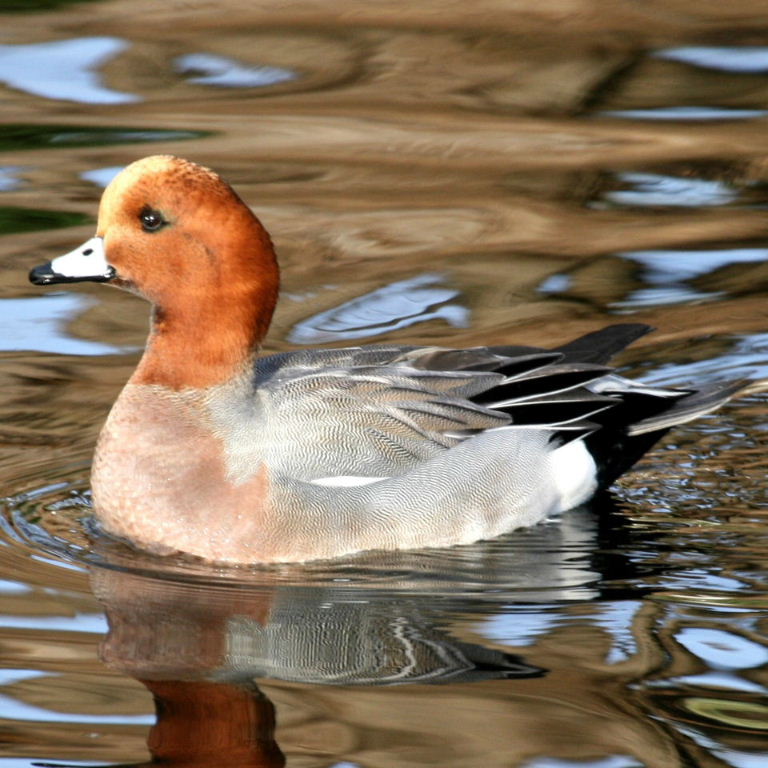Wigeon/Widgeon also Eurasian Wigeon Mareca (prev. Anas) penelope



The Wigeon (archaic spelling Widgeon), also called the Eurasian Wigeon to distinguish it from the related American Wigeon,
is prevalent in northern Europe and Asia. It is also an occasional vagrant to North America where it will mix with flocks
of American Wigeon and can interbreed; occasionally the reverse is true, and American Wigeon vagrants or escapees can be
found in flocks of Eurasian Wigeon. The third species of Wigeon, the South American Chiloe Wigeon, is also related.



The (Eurasian) Wigeon drake (above) has a russet head and neck and a pinky white centre crown; he does not have the metallic green
on the side of the face that its American counterpart has. He has a well-defined break between his pink breast and finely vermiculated grey sides.
He has a black-tipped, blue-grey bill, a white belly, black rump and a green wing speculum. His eclipse plumage is similar to that of the female.



The Eurasian Wigeon was moved from genus Anas to Mareca with other wigeons, Gadwall and Falcated Duck in 2009.



The (Eurasian) Wigeon female (above) looks a little similar to female mallards and teals but can be distinguished by her black-tipped,
small, blue-grey bill and russet sides. She is almost identical to the female American Wigeon but has a darker head (and some white on the under-wings).

Confusingly, the female Wigeon also has a GREY MORPH (lacking the warm russet tones) but the source refers only to a grey head . . .


. . . and a RUFOUS MORP (lacking the grey tones), again referring only to a more reddish head.
However, as shown immediately above, the drake in eclipse plumage has a more rufous total plumage.



Is the collective noun for a group of widgeon a "lawnmower"?



